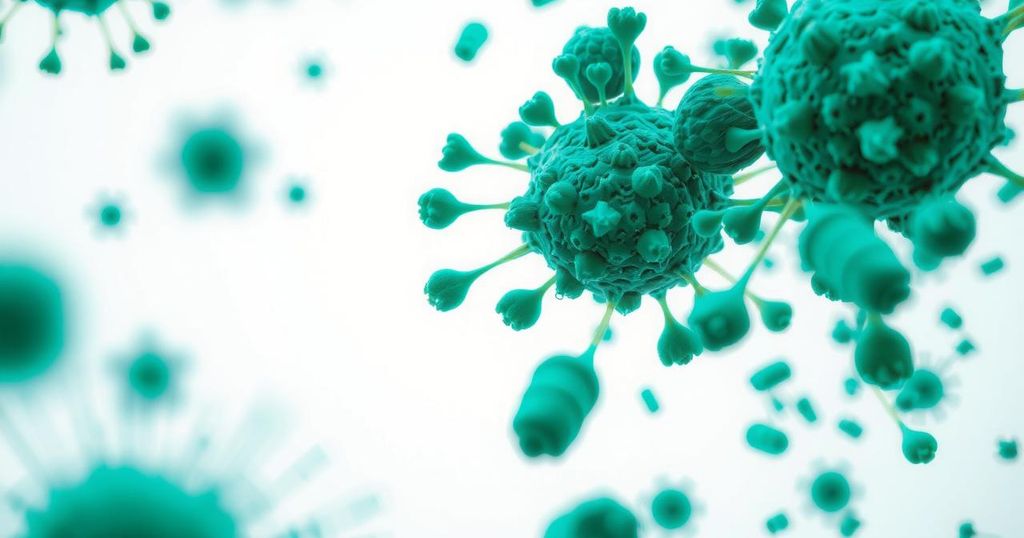Lifestyle
ACCIDENTS, AFRICA, DALLAS, DEMOCRATIC REPUBLIC OF THE CONGO, DISEASE, DISEASE OUTBREAK, DRC, FAMILY LEGACY, HEALTH, KAMPALA, KAUFMAN, KAUFMAN COUNTY, NORTH AMERICA, NTOROKO, PUBLIC HEALTH, T HE WHO, TEXAS, TEXAS PARKS AND WILDLIFE DEPARTMENT, TPWD, UGANDA, UNITED STATES, WAKISO, WHO, WORLD HEALTH ORGANIZATION
Fatima Khan
0 Comments
Update on Ebola Sudan Outbreak, CWD Detection in Texas, and Health Risks of Sleep Debt
The WHO reports a second Ebola Sudan cluster in Uganda, involving three confirmed and two probable cases linked to a deceased child. Simultaneously, CWD has been detected in Kaufman County, Texas, marking a first at a deer farm. Lastly, a study shows sleep debt among nurses increases the risk of common infections, highlighting urgent health issues associated with shift work.
On March 8, the World Health Organization (WHO) provided updates on a second cluster of cases related to the Ebola Sudan outbreak in Uganda. This cluster includes three confirmed and two probable cases, all linked to a four-year-old child, whose death from the virus was reported on February 25. Concern over undetected transmission has prompted increased surveillance in the affected regions.
The WHO’s African regional office reported that the boy’s mother experienced acute illness following childbirth and subsequently died, alongside her newborn child. Both were from Ntoroko district, adjacent to the Democratic Republic of the Congo. Unfortunately, neither individual was tested for the virus, and their deaths were classified as probable cases.
The mother began presenting symptoms on January 22, passing away on January 6, while her child died on January 12. The WHO noted that “the three deaths did not have a supervised burial.” The outbreak now confirms an eleventh and twelfth case, both women linked to the child and mother, who are currently receiving treatment.
As of March 2, 192 new contacts from Kampala, Wakiso, and Ntoroko districts are undergoing monitoring in relation to these cases. This outbreak marks the sixth instance of Ebola Sudan in Uganda, with the case fatality rate reported at 29%, lower than rates recorded in previous outbreaks, ranging from 41% to 70%.
In a separate development, the Texas Parks and Wildlife Department confirmed the first detection of Chronic Wasting Disease (CWD) in a deer farm in Kaufman County, Texas. Two white-tailed deer tested positive for this fatal neurological disease during mandated surveillance, resulting in quarantine of the infected facility to curb potential spread.
CWD, first identified in 2012 in free-ranging mule deer, spreads amongst cervids through body fluids. Since its initial detection in Colorado, CWD has been documented across 36 U.S. states and several countries worldwide, emphasizing the importance of stringent testing protocols in permitted deer breeding facilities.
Additionally, a study at Haukeland University Hospital in Norway has linked sleep debt and night shifts among nurses to a higher risk of infections. An analysis of 1,335 Norwegian nurses found that sleep deprivation was correlated with increased vulnerability to illnesses such as the common cold, pneumonia, and gastrointestinal infections. The results underscore the health risks associated with shift work, which affects about a quarter of the global workforce.
In conclusion, the recent updates by the WHO regarding the Ebola Sudan outbreak in Uganda highlight ongoing concerns about undetected transmission and the challenges posed by unsupervised burials. Concurrent developments in Texas regarding CWD demonstrate the need for vigilant surveillance in wildlife. Furthermore, findings from Norwegian nurses underscore the significant health implications of sleep debt and night work. These reports collectively stress the importance of monitoring and preventive measures in public health settings.
Original Source: www.cidrap.umn.edu




Post Comment